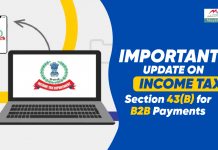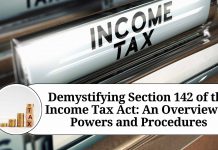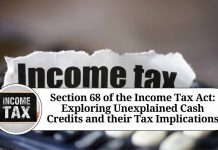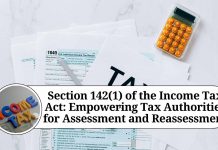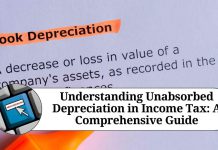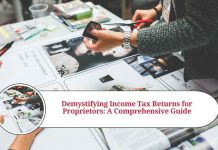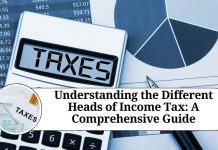Section 250 of the Income Tax Act deals with the power of the Commissioner (Appeals) to rectify any mistake apparent from the record. In this blog, we will discuss this section in detail, including its scope, procedure, and relevant provisions.
Scope of Section 250
Under Section 250, the Commissioner (Appeals) has the power to rectify any mistake apparent from the record, including any clerical or arithmetical errors, incorrect application of law or facts, or any other errors apparent on the face of the record. The rectification can be made either on his own motion or on an application filed by the taxpayer.
Procedure for rectification under Section 250
The following is the procedure for rectification under Section 250:
- The taxpayer can file an application to the Commissioner (Appeals) for rectification of any mistake in the order.
- The application for rectification should be filed within four years from the end of the financial year in which the order sought to be rectified was passed.
- On receipt of the application, the Commissioner (Appeals) will consider the same and pass a rectification order either allowing or rejecting the application.
- The rectification order should be passed within six months from the end of the month in which the application was received.
- If the rectification order results in an increase or enhancement of the tax liability of the taxpayer, the Commissioner (Appeals) must give the taxpayer an opportunity of being heard before passing the order.
Provisions related to rectification under Section 250
The following are the provisions related to rectification under Section 250:
- Rectification can be made only for a mistake that is apparent from the record. This means that the mistake should be one that is evident on the face of the record, and there should be no need for further inquiry or investigation.
- The Commissioner (Appeals) cannot use the power of rectification to review his own order or to substitute a different view.
- The rectification order must be passed within six months from the end of the month in which the application for rectification was received.
- If the rectification order results in an increase or enhancement of the tax liability of the taxpayer, the Commissioner (Appeals) must give the taxpayer an opportunity of being heard before passing the order.
Importance of Section 250
Section 250 is an important provision of the Income Tax Act as it provides a simple and effective way for taxpayers to get any mistakes in their tax assessments rectified. The provision is particularly useful for small taxpayers who may not have the resources to go through the more time-consuming and expensive process of filing an appeal.
Moreover, the provision ensures that the assessment process is accurate and fair. Mistakes can happen, even in the most carefully conducted assessments, and Section 250 allows taxpayers to get such mistakes corrected without the need for lengthy legal proceedings.
Limitations of Section 250
It is important to note that Section 250 has certain limitations. For example, the provision can only be used to rectify mistakes that are apparent from the record. This means that the provision cannot be used to correct mistakes that require further inquiry or investigation. Also, the provision cannot be used to review the order of the Commissioner (Appeals) or to substitute a different view.
Another limitation of Section 250 is that it does not allow for rectification of orders that have already been subject to an appeal. This means that if an order has already been appealed, any mistakes in that order can only be corrected through the appeal process.
Conclusion
In conclusion, Section 250 of the Income Tax Act is an important provision that provides taxpayers with a simple and effective way to get any mistakes in their tax assessments corrected. The provision ensures that the assessment process is accurate and fair and is particularly useful for small taxpayers who may not have the resources to go through the more time-consuming and expensive process of filing an appeal. However, it is important to note that the provision has certain limitations, and taxpayers should be aware of these limitations before seeking rectification under Section 250.
Read more useful content:
- section 234e of income tax act
- section 286 of income tax act
- section 90a of income tax act
- section 40a(7) of income tax act
- section 226(3) of income tax act
- section 24 of income tax act
Frequently Asked Questions (FAQs)
What is Section 250 of the Income Tax Act?
Section 250 of the Income Tax Act provides the power of the Commissioner (Appeals) to rectify any mistake apparent from the record.
Who can apply for rectification under Section 250?
The taxpayer can file an application for rectification under Section 250.
What kind of mistakes can be rectified under Section 250?
Any mistake apparent from the record, including any clerical or arithmetical errors, incorrect application of law or facts, or any other errors apparent on the face of the record can be rectified under Section 250.
Is there any time limit for filing an application for rectification under Section 250?
Yes, the application for rectification should be filed within four years from the end of the financial year in which the order sought to be rectified was passed.
Can the Commissioner (Appeals) review his own order under Section 250?
No, the Commissioner (Appeals) cannot use the power of rectification to review his own order or to substitute a different view.
Is there any requirement to give an opportunity of being heard to the taxpayer before passing a rectification order under Section 250?
If the rectification order results in an increase or enhancement of the tax liability of the taxpayer, the Commissioner (Appeals) must give the taxpayer an opportunity of being heard before passing the order.
Can rectification be made for an order that has already been subject to an appeal?
No, rectification cannot be made for an order that has already been subject to an appeal.
What is the time limit for passing a rectification order under Section 250?
The rectification order must be passed within six months from the end of the month in which the application for rectification was received.
Can the power of rectification under Section 250 be used to correct mistakes that require further inquiry or investigation?
No, the power of rectification under Section 250 can only be used to rectify mistakes that are apparent from the record.
Is rectification under Section 250 a substitute for filing an appeal?
No, rectification under Section 250 is not a substitute for filing an appeal. If a taxpayer is not satisfied with the rectification order, he/she can still file an appeal against the original order.











